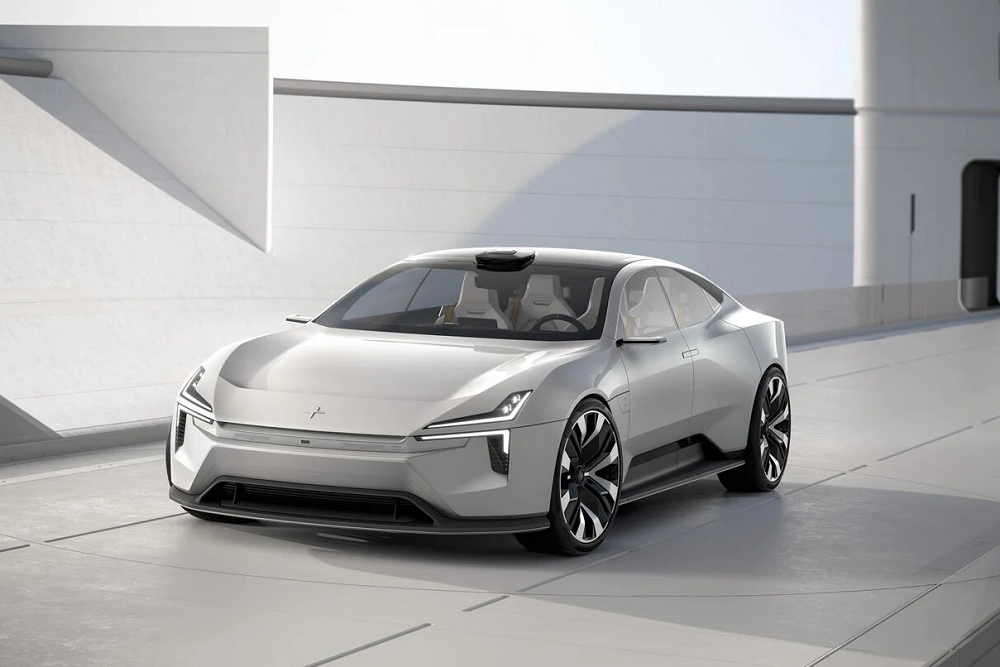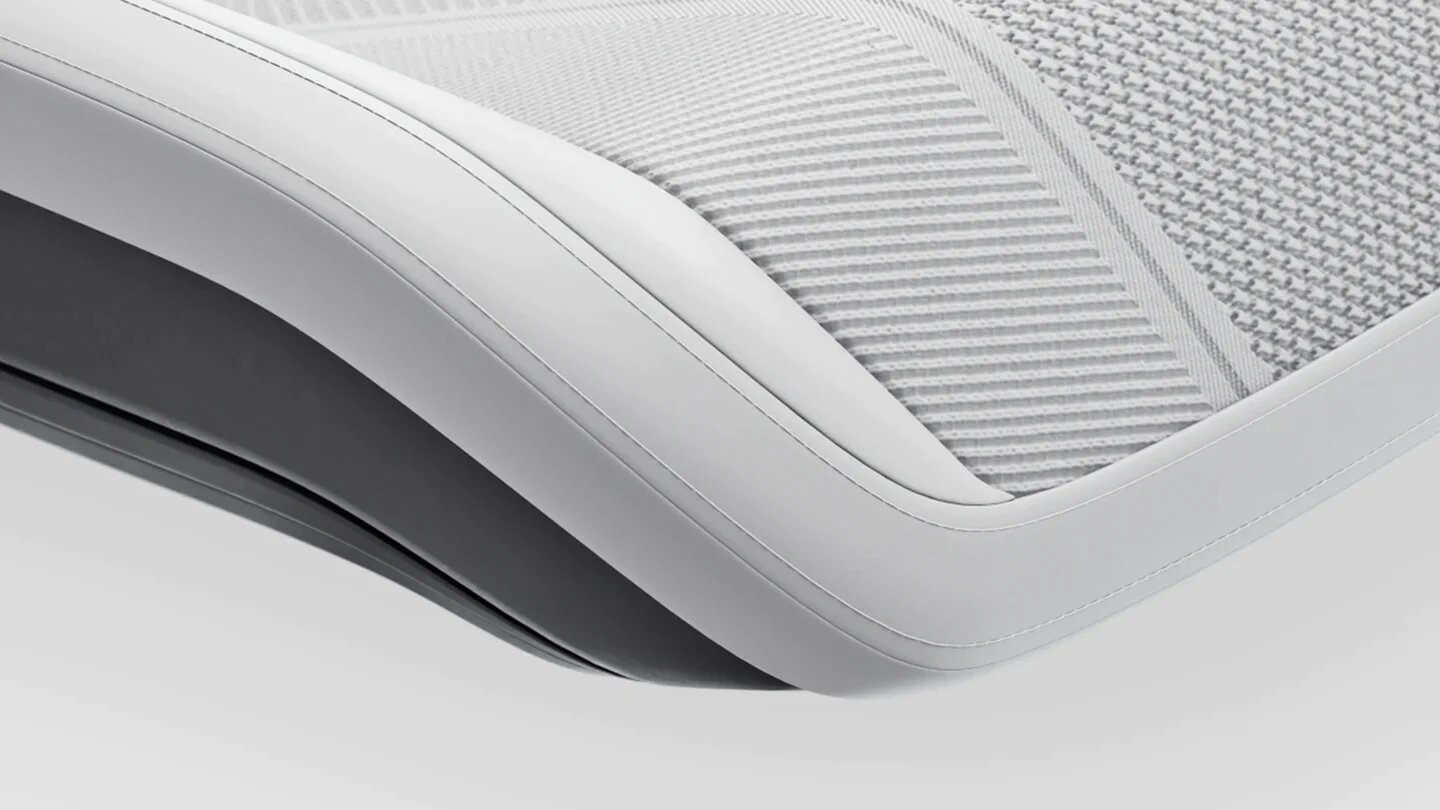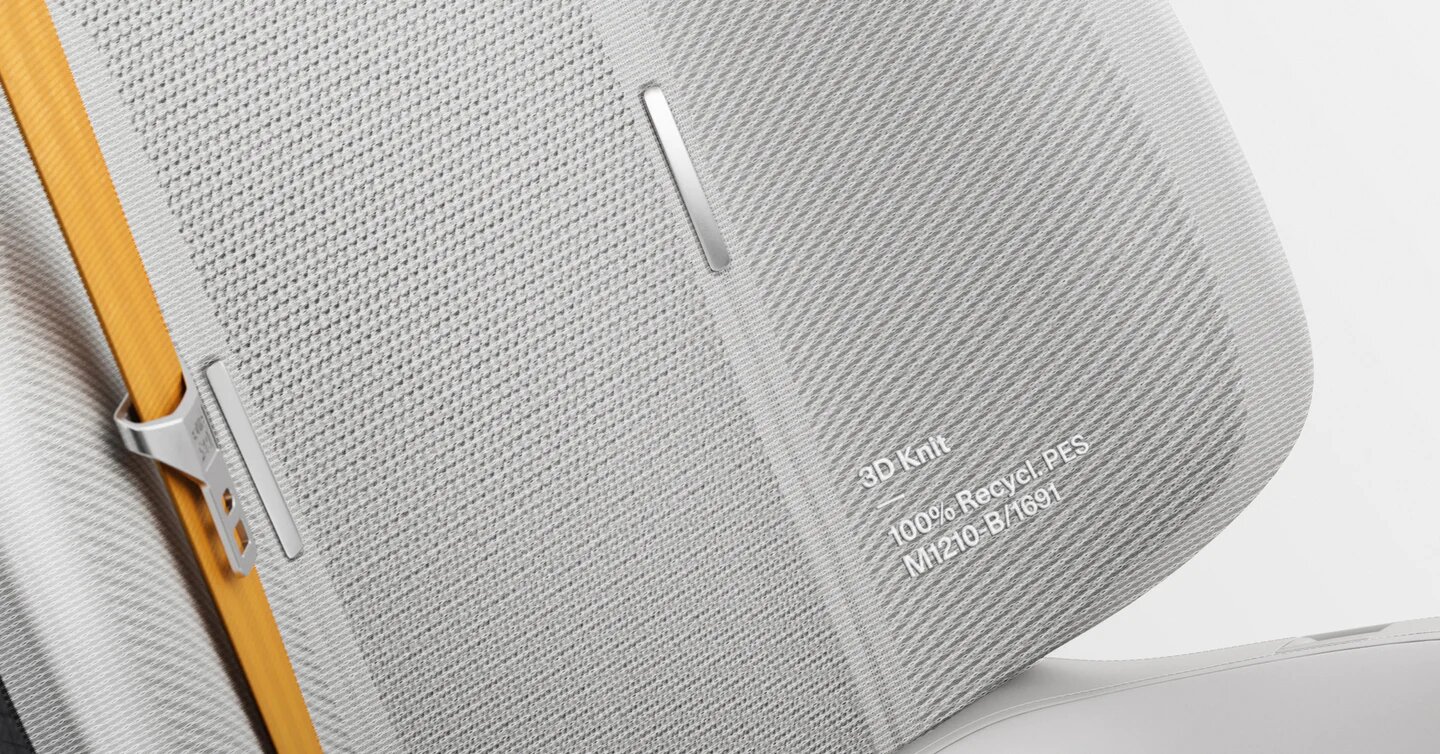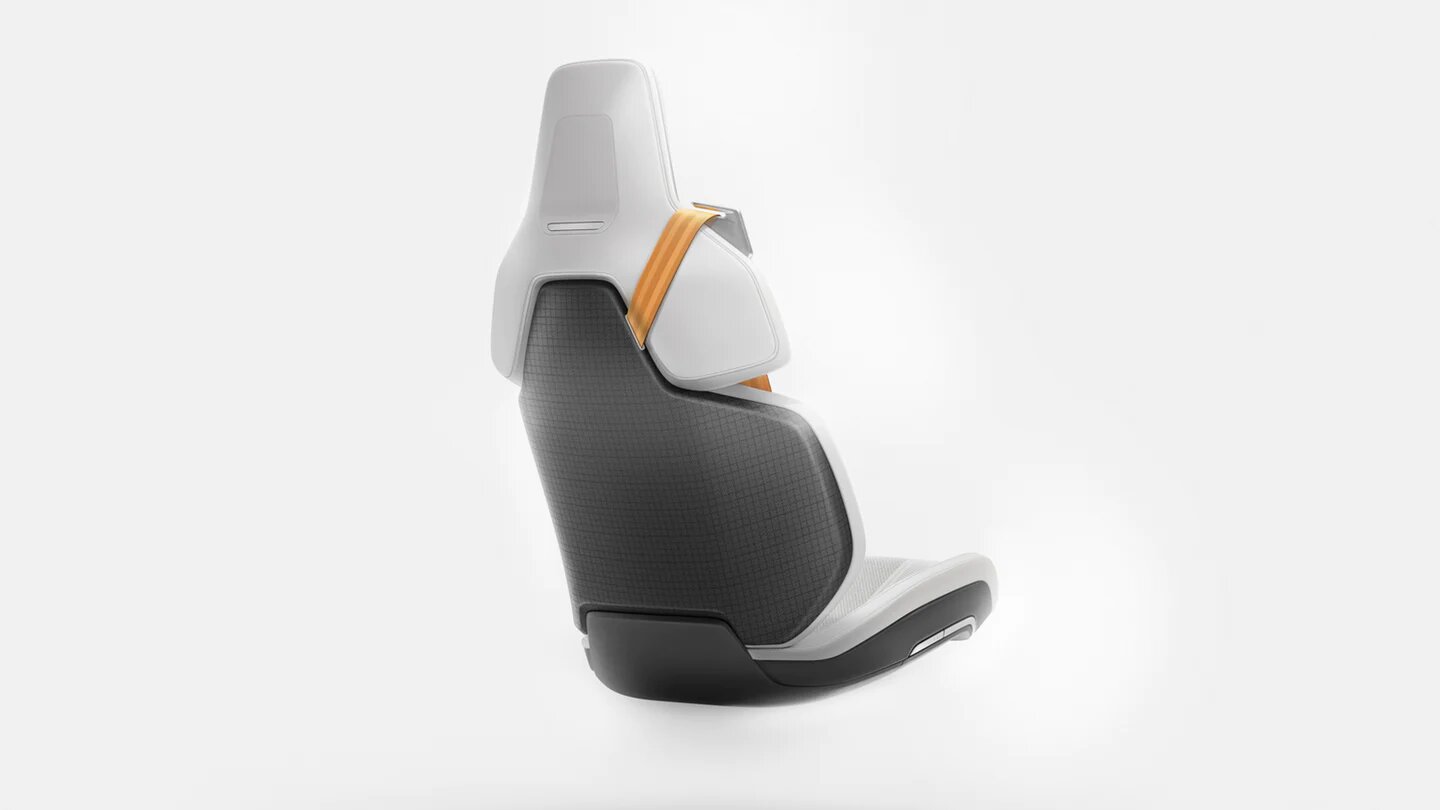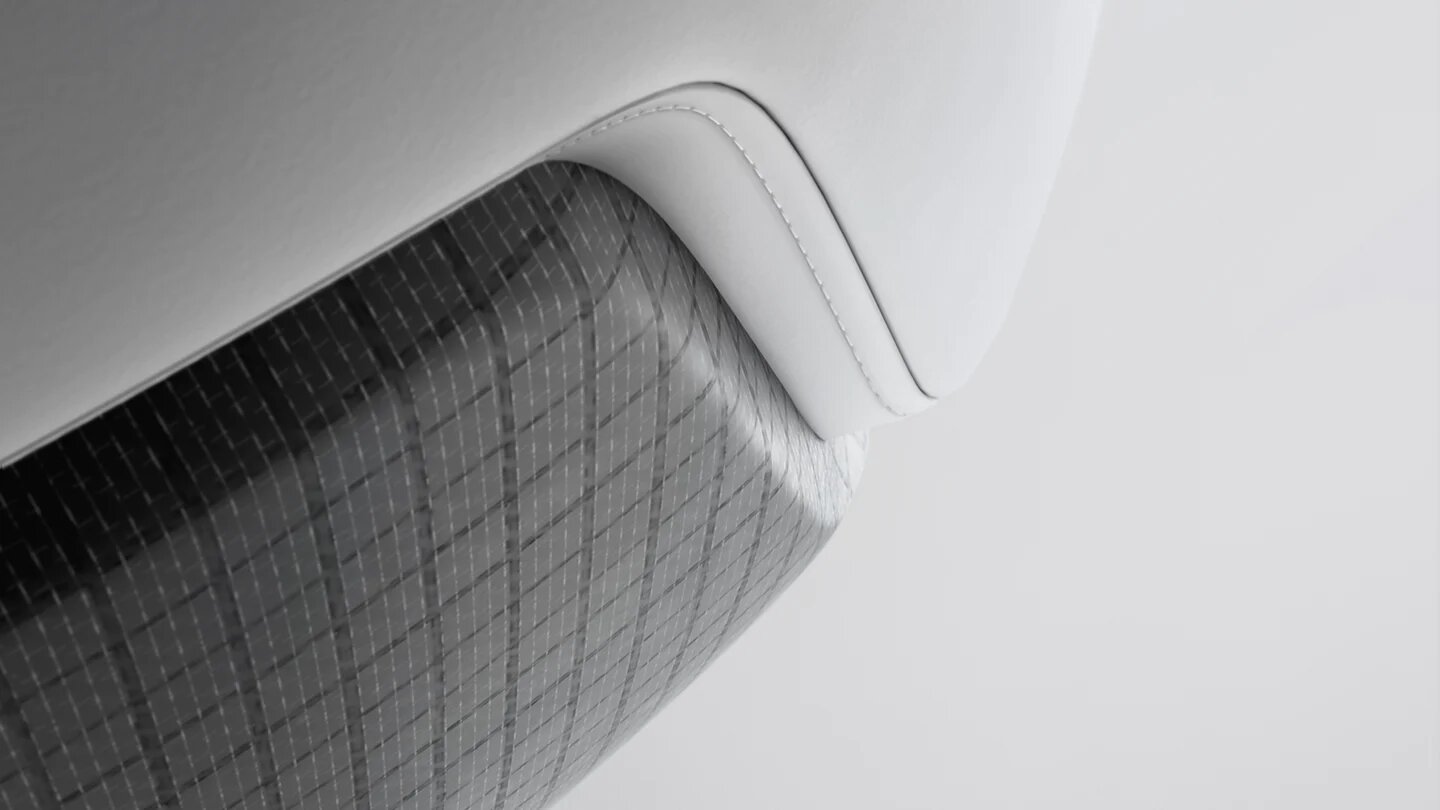Polestar Precept: A rule intended to inform behaviour or thought. In other words, a way of declaring how you mean to proceed. Starting as you mean to go on. Stating your intentions up top. A manifesto. It’s also the name for something that takes all of there ambitions and combines them.
Sometimes, they all come together. All the ambitions, hopes, aspirations, dreams, and plans. At Polestar, that’s just happened. There ambitions for sustainability, there plans for technology, and there aspirations for design have all meshed. Mingled. Come together. And they have given it a name. It’s called Polestar Precept. See for yourself.
Eye-tracking and proximity
You don’t need to know everything.
What began as a reprimand to nosy people has become a guiding principle when it comes to HMI design. As screens keep getting bigger, as their resolution improves, and as more and more functions are dreamt up to “improve the in-car experience”, displays in cars are less about important information and more about how colourful, interactive and (let’s face it) distracting they can be.
Not only is this unnecessary, it’s unsafe. Vivid, colourful, gamified screens are beautiful, but they distract the eye. In darkened driving conditions, they can make it much harder to see the road. Polestar has a two-fold approach on how to make an HMI parcel out only the most important information, right when it’s needed.
The first is eye-tracking. The HMI knows where the driver is looking at any given time and adjusts the different in-car displays accordingly.
The second has to do with proximity. When the screen senses that a hand is coming towards it, a few things occur: the screen shows more information, buttons and sliders enlarge for easier manipulation, and the screen becomes brighter.
You don’t need to know everything. At least, not while you’re driving. The new Polestar HMI displays what you need to know, when you need to know it.
The next stage of infotainment
Polestar partnered with Google to develop a seamless infotainment experience for the Polestar 2, powered by Android. They recognised certain limitations in the automotive world when it came to the in-car experience: navigation was lacking, apps were pale shadows of their smartphone equivalents, and the less said about speech recognition, the better.
The next stage will build on the current connected experience in the Polestar 2. The Google Assistant will evolve to be an even more helpful co-pilot, using advanced speech technology to expand to more languages, understand local accents and provide a more personalised experience. Video streaming from your favourite apps and services will be made available while you charge your vehicle. Even lighting, climate, and seating preferences will automatically adjust for a seamless driving experience.
This is a previously unseen in-car experience. And the first glimpse of it will be in a Polestar.
A new use for plastics
Plastic has found its third act.
Once considered a revolutionary material, plastic was a miracle solution. As transparent and malleable as glass, but nowhere near as fragile, plastic was used in countless applications.
And though it was recyclable, a combination of inadequate recycling programs and low residual value meant that a majority of used plastic ended up in landfills. And the ocean. To the tune of 8 million tonnes per year.
However, plastic is about to redeem itself. New doors are opening when it comes to used plastic, thanks to innovative techniques and unorthodox solutions. A few of which they are putting into practice.
The first of these is 3D-knit. Made from 100% recycled PET bottles, this knitted fabric is already a known entity in fashion and footwear. It looks and feels premium, reduces waste, and the production process itself wastes nothing as the material can be made to size.The second is recycled Nylon 6, a material fashioned from discarded fishing nets. An international collection network provides said nets, meaning a self-perpetuating supply of plastic which would have otherwise ended up in the sea.
The third is cork, along with bottle stoppers from the wine industry. These materials, along with waste products from the cork manufacturing process, form part of the interior PVC components.
The fourth are the woven flax fibres of Bcomp, with their innovative powerRibs™ material forming the rear seat panels.None of these materials come at the expense of design or quality. “If anything, they enable even more premium, cutting-edge, modern and stylish executions which elevate there design-led products,” states Polestar Head of Design Maximilian Missoni. “We were able to derive new aesthetics from new contexts and technologies, allowing society to move on.”
Plastic has been reinvented multiple times, from miracle material, to scourge of the environment, to a new, sustainable definition of premium. Plastic has found its third act, one that ensures its incredible shelf life is leveraged.
Less plastic in the ocean. More premium in a Polestar.
Polestar and Bcomp
Every so often, science fiction becomes science fact.
Blending technology and living materials is an age-old science fiction idea. So is replacing the mechanical with the biological. Occasionally, something from sci-fi is not only possible to replicate in real life, but also incredibly useful. Like the materials made by Bcomp.
Based in the Swiss city of Fribourg, Bcomp is a “natural fibre composite innovator” which has been producing sustainable materials for a variety of applications since 2011. What makes this a science-fiction-in-real-life story is that they’re made from organic fibres. They’ve teamed with Bcomp in order to make use of two of their game-changing composites.
The first of these materials is ampliTex™, made from woven flax fibres. When used in the interior of a car, for example, it reduces both vibrations and overall weight, while acting as a visual layer. The fibres are processed mechanically as opposed to chemically, and flax itself is much less taxing on soil than other crops.
The second is powerRibs™, also made from flax. Inspired by the vein structures of leaves, they form a 3D structure on the back of a panel which drastically increases the panel’s strength and stiffness. This allows the panel itself to be thinner than if it were made of a more traditional material, cutting down both weight and material amount. It reduces vibrations by a whopping 250%. It can even behave better in a crash situation when compared with more conventional materials.
Ground-breaking materials made from organic components used to only be found in the far future of science fiction. Soon, they could be found in a Polestar.
Report by polestar.com

